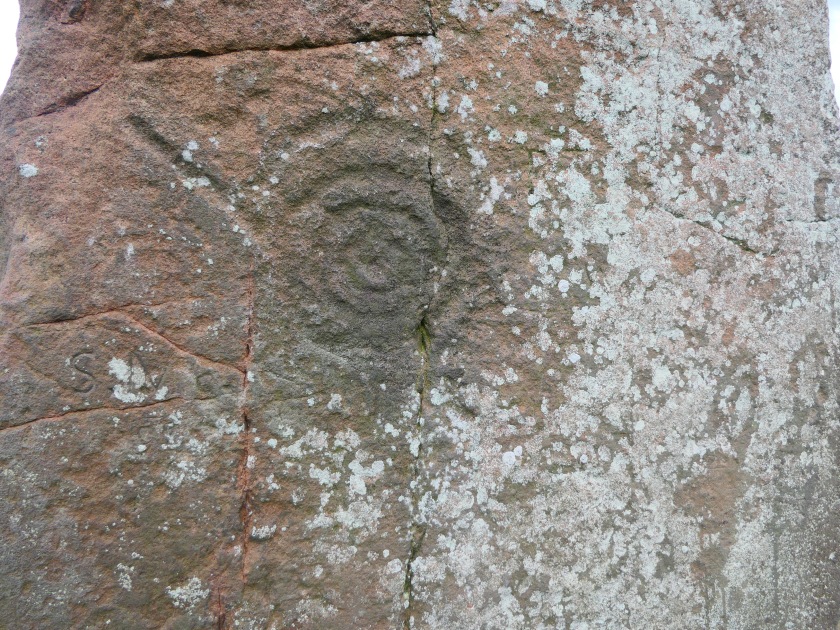 I had never heard of them before, until we moved to Yorkshire, near to the famous Ilkley Moor. There I discovered that just about every rock on the Moors was inscribed with cup and ring markings. And more than that, cup and ring markings are to be found in abundance all over of Britain, and to a lesser extent, the world.
I had never heard of them before, until we moved to Yorkshire, near to the famous Ilkley Moor. There I discovered that just about every rock on the Moors was inscribed with cup and ring markings. And more than that, cup and ring markings are to be found in abundance all over of Britain, and to a lesser extent, the world.
They consist of a concave depression, no more than a few centimetres across, pecked into a rock surface and often surrounded by concentric circles also etched into the stone. Sometimes a linear channel called a gutter leads out from the middle.
They first date back to around 6,000 years ago, and continued to be carved on stones for another 2-3,000 years.
They are perhaps one of the biggest mysteries of ancient times, and yet one of the least known. Britain has more of these markings than anywhere else, and they are to be found throughout England, Wales, Scotland and Ireland.
As an example, there are many to be found at Kilmartin Glen. Amongst the numerous cup and ring markings can be found what can only be described as “rock art”, as well as standing stones, cairns, and from a later age, a hill fort.
But what are they meant to symbolise? Why did ancient peoples spend hours, days probably, making these strange marks on outcrops of rock? And why did the tradition of making the carvings last so long?
There are no answers; Professor Alex Thom thought that their creators might have used a standard measure in their creation, and there seems to be some evidence for this, but far from conclusive. And even if there is a standard measure, it does not answer the question, why?
Skip to content
Stuff on Celts, Druids, Standing Stones and suchlike.
Part of the Wisdom of Rhiannon series (www.wisdomofrhiannon.co.uk).
